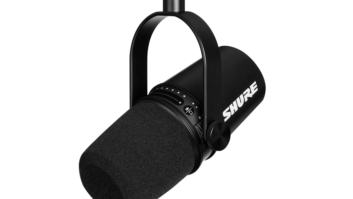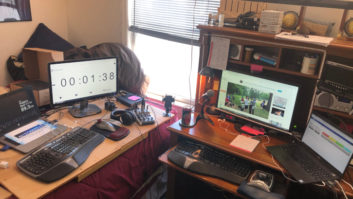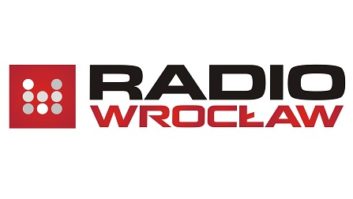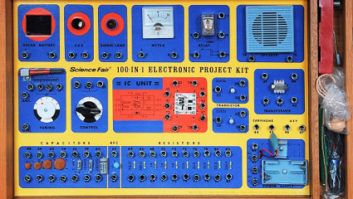In an era when lots of engineers have left our industry and migrated into full-time careers in IT, Randy Woods is a reverse exception.
Woods spent more than 10 years working as an IT specialist in banking and other businesses before discovering radio engineering a decade ago. He is director of engineering for Central Florida Educational Foundation’s Z88.3 and its noncommercial Christian radio stations WPOZ(FM), WMYZ(FM) and WHYZ(FM), as well as translator stations, serving Orlando and Central Florida.

Fig. 1: An example of how bridge-based network redundancy falls short. Having worked in an industry that embraced computer network-based technologies long before broadcasting did, Woods brings a wealth of new perspective and creative problem-solving ideas to his NAB 2011 Broadcast Engineering Conference session. But he does so with a keen focus on efficiency and cost savings at the same time.
“Many of the IT practices that I was involved in a decade ago are just starting to come into common use in broadcasting,” he said.
“That is great news for us, as we can learn from the past, benefit financially from the commodity status of the IT world and implement cost-effective systems and techniques in the current budget-restrained radio industry.”
Economical power
Setting up reliable redundancy for standby and off-site emergency backup computer systems is one of the areas where Woods has made big improvements at his and other stations.
“We can put in the technology that will make our stations better and we don’t have to pay for the first and second generation of R&D for these systems. We can get them for almost nothing in many cases. The same equipment that I installed in large bank data centers, that was state of the art at the time and cost $50K, I am now installing into my radio station for $1,000 or less.”
Woods will discuss details of some of the systems he’s installed and where he bought them.
“Yes, our station would not be what it is today if it were not for eBay,” said Woods, revealing an increasingly valuable resource more engineers are discovering and using.
Data and LAN/WAN connectivity to transmitter sites increasingly is becoming necessary and even critical for most stations. Often, the only options are wireless links, which Woods says have a higher potential for failure.
“IT best practices of the past will tell us that we should use routers, rather than bridges, to connect telco-based and wireless WAN links. In radio, the wireless links are natively bridges, so commonly they are installed directly into the core without a router isolating them. That has a number of disadvantages which we need to review to make the case for using only routed systems.”
Quality of Service is an IT process that is managed carefully and extensively by IT pros in many enterprises where consolidated data services are mission-critical. Yet QoS rarely is managed in radio applications.
“QoS is a relatively complex system of classifying, prioritizing, and queuing data. It is implemented differently by every equipment vendor, and it is also commonly different from model to model within the same vendor,” he said.
“For the average radio engineer, it is outside of their skill set, and will probably stay there. For a skilled IT person, it is great fun! To master every packet and tell it where to go and when to go is thrilling for an IT pro.”
(click thumbnail)
Fig. 2: This view of Z88.3’s Network Management System shows the status of every monitored device at a glance. ‘Green is good,’ Randy Woods says. ‘Anything else, dig deeper to find the root cause. Historical event logs are on the right.’ Woods will describe a few areas and applications in our business where more active management of QoS can provide important benefits.
SNMP
Remote control and monitoring is a critical component in broadcast operations to ensure that critical systems stay up and on the air.
“About 12 years ago, I managed a group of people that monitored the IT systems in about 500 bank branches and data centers. The only way that it was possible was through the use of a standard called Simple Network Management Protocol, or SNMP. When I came into radio 10 years ago, there was no SNMP-based monitoring system for radio.”
Nowadays more broadcast companies are using SNMP.
“I’ll show you examples of how I have implemented SNMP into radio and how we did it relatively inexpensively. We installed an SNMP-based programmable logic controller into our emergency generators, replacing the multi-thousand-dollar controllers with a few-hundred-dollar controllers and again put spares on the shelf.”
Beyond the tips and suggestions Woods will offer for improving IP-based operations in radio stations, he will delve into several other arenas ripe for improvement. Emergency generators and uninterruptible power supplies are two systems that must work when called upon but too often fail for various reasons.
“I will make several recommendations to increase the reliability of your generator systems, and we’ll cover ways of making UPS’s even more uninterruptible.”
Commercial radio, Woods also notes, lives and dies by ratings.
“If your PPM encoding is not working, you are not being rated, no matter how much your listeners love your station. You must monitor your PPM encoding effectively.” He will show how Z88.3 did this and took up less rack space and electricity doing it.
His presentation is part of the Tuesday afternoon “Radio Engineering Forum II.”












